Vankar Dayalak Kudecha, Bhujodi
Kala cotton, an ancient and resilient fabric, has a rich history, tracing its origins back to the Mohenjodaro archaeological site around 2700-3000 BCE [2] [4]. This sustainable cotton, grown in the Kutch area of Bhuj district, Gujarat, is known for its environmentally friendly cultivation, relying on traditional weaving techniques and sustainable farming practices.
Today, with the efforts of the Khamir organization and the Vankar community, Kala cotton is experiencing a revival, playing a significant role in cultural preservation and offering a sustainable textile option for environmentally conscious clothing brands.
The Rich History of Kala Cotton
In exploring the storied past of Kala cotton, several key points emerge that underline its historical significance and the factors contributing to its decline and resurgence:
Trade and Exportation
-
Kala cotton was a significant part of India’s cotton export trade to Britain during the 1940s, with a vibrant trade of spices for Kala cotton dresses [1] [7].
-
Its prominence extended from the Roman Empire era up to the nineteenth century, marking it as a major export and manufactured product [8].
Decline During Colonial Rule
-
The British Raj's laws mandated Indian sellers to trade cotton only with specific buyers, severely impacting the local spinning and weaving industries [8].
-
This, coupled with the increased popularity of regular cotton, led to Kala cotton's gradual decline [1].
-
The demand and cultivation of Kala cotton saw a significant decrease during colonial rule, contributing to its diminished usage [2].
Modern-Day Revival
-
Despite its historical decline, Kala cotton comprises 2% of India's indigenous cotton production today, with the Kutch region being a primary source [8].
- Efforts are underway to protect and promote Kala cotton, including its registration as a trademark, signaling a revival of interest in this sustainable cotton variant.
These points collectively highlight the rich history of Kala cotton, its challenges during the colonial period, and the contemporary efforts towards its preservation and reintegration into modern fashion and design.
Vankar Rajesh weaving a scarf on his pit-loom.
Cultivation and Production Techniques
In the cultivation and production of Kala Cotton, several key techniques and practices highlight its sustainability and resilience:
Rain-Fed Cultivation
Kala cotton thrives on rainwater, eliminating the need for water-intensive irrigation practices. This characteristic makes it exceptionally suitable for the arid regions of Kutch, where rainfall is scarce [12] [15] [17].
-
Minimal Water Requirement: A single day of good seasonal rain can suffice for the crop's growth, with 2-3 showers ensuring a good harvest [17].
-
Drought Resilience: Its ability to grow in drought-prone areas with less than 40 cm of rainfall showcases its exceptional drought tolerance [15] [17].
Organic Farming Practices
The cultivation of Kala cotton adheres to organic farming principles, requiring no synthetic pesticides or fertilizers. This not only reduces the environmental impact but also supports the health of the soil and local ecosystems [10] [14].
-
Pest Resilience: The crop's natural resistance to pests diminishes the need for chemical pesticides, contributing to a more eco-friendly cultivation process [10].
-
Genetic Purity: Kala cotton is a genetically pure variety, distinguishing it from genetically modified cotton variants. Its cultivation supports biodiversity and maintains soil health [14] [15].
Traditional Harvesting and Processing
The entire process, from picking to weaving, is done by hand, preserving traditional skills and ensuring the highest quality of the final textile.
-
Handpicking: Skilled artisans select only the finest cotton bolls, ensuring the fiber's quality from the very beginning [16].
-
Natural Dyes: The threads are often dyed using eco-friendly, natural dyes, further minimizing the environmental footprint of Kala cotton textiles.
-
Handloom Weaving: The weaving of Kala cotton into fabrics is done on traditional handlooms, a practice that supports the livelihoods of local weavers and preserves cultural heritage.
These practices underscore the sustainable and environmentally friendly nature of Kala cotton, showcasing its potential as a textile of the future that aligns with principles of conservation and responsible production.
The Role of Artisans and Communities

In the heart of Kutch, the Kala Cotton Initiative, spearheaded by Khamir in collaboration with Satvik, has woven a tapestry of opportunity and revival for the local communities. This initiative, launched in 2007, has been pivotal in exploring the production possibilities of Kala Cotton, a resilient and sustainable fabric [10].
Creating a Value Chain
At its core, the initiative seeks to create a comprehensive value chain that encompasses Kala Cotton farmers, ginners, spinners, and weavers. This supply chain is instrumental in transforming raw cotton into exquisite handwoven products, thereby promoting locally grown species and working with marginalized communities [10].
Empowering Artisans
The Vankar community, with notable members like Vankar Suresh Parbat and Vankar Valji Parbat, takes immense pride in their weaving tradition. This tradition not only provides them with an identity but also a sustainable means of livelihood. Their skills in weaving have garnered several awards, underscoring the exceptional quality of their work [9] [6].
Sustaining Livelihoods through Ecological Farming
By linking Kala Cotton farmers with small-scale weavers, the initiative supports ecological farming practices. This approach not only promotes agricultural and artisan livelihoods but also contributes to the preservation of traditional craftsmanship. The hand-woven Kala Cotton, compatible with natural dyes like indigo, finds its use in traditional art forms such as Ajrakh and Shibori, further enriching the cultural tapestry of the region [14] [15] [6].
This concerted effort underscores the significance of sustainable cotton in fostering a healthy environment and sustainable economies. It highlights the indispensable role of artisans and communities in preserving traditional crafts while navigating the path towards responsible fashion [19].
Environmental Impact and Sustainability
Kala Cotton's environmental impact and sustainability features are profound and multifaceted, offering a beacon of hope in the textile industry's quest for greener alternatives.
Natural Attributes and Ecological Benefits
-
The unique deep brown color of Kala Cotton is derived naturally from the soil composition and the plant's inherent properties, eliminating the need for artificial dyes.
- Its fibers are naturally short to medium, thicker and have a bit of coarse texture, which contributes to the fabric's unique characteristics, exceptional durability, resistance to tears, wrinkles, and fading.
-
Kala Cotton's cultivation is energy-efficient and carbon-neutral, thriving in harsh weather conditions and promoting ecological diversity [15] [1].
- In 2010-11, Wagad cotton, which is naturally organic and has since received organic certification, was given the brand name Kala Cotton. The term 'kala' refers to the cotton pod, symbolizing the core of the cotton plant [20].
Water Conservation and Carbon Neutrality
-
This crop is particularly hardy and resilient in drought-prone areas, requiring less than 40 cm of rainfall, which underscores its minimal water requirements [15].
-
The resurrection of Kala Cotton signifies a move towards more cotton production with lesser water usage and reduced carbon pollution, aligning with global efforts to mitigate climate change impacts [1].
Sustainability in Fashion
-
In a world where the fashion industry is a significant contributor to global wastewater and carbon emissions, Kala Cotton presents a sustainable alternative [19].
-
The fabric's compatibility with natural dyes, especially indigo, and its distinctive aesthetic make it an ideal choice for clothing brands looking to minimize their environmental footprint [6] [15].
By integrating Kala Cotton into modern textiles, we not only embrace a fabric that is environmentally friendly and sustainable but also contribute to the preservation of traditional weaving techniques and support for local communities. This approach aligns with the growing consumer demand for products that are not just aesthetically pleasing but also ecologically responsible.
Kala Cotton in Modern Fashion and Design
In the realm of modern fashion and design, Kala cotton is making significant strides, appealing to a niche yet growing audience that values sustainability and ethical production methods.
Organic Kala Cotton Scarves
Fashion Brands Embracing Kala Cotton
-
Earthpiece has been pioneering in incorporating Kala cotton into men's fashion, sourcing directly from the artisans of Kutch, showcasing the fabric's versatility beyond traditional wear [6].
-
SUI, in collaboration with Karghewale, a green NGO, is another testament to the fashion industry's growing inclination towards sustainable materials, sourcing Kala cotton for their collections from young weaver entrepreneurs in India [18].
International Recognition and Consumer Demand
-
The fabric's unique texture and eco-friendly attributes have not only caught the attention of Indian fashion labels but have also paved the way for its recognition in international markets [15].
-
The demand for Kala cotton is on the rise, driven by conscious consumers who appreciate its slow production process and the purpose it serves in promoting sustainable fashion [5] [6].
Challenges and Opportunities
-
Despite its growing popularity, the large-scale revival of Kala cotton faces challenges such as the need for consistent demand, protection against imitation by powerloom, and the risk of organic cotton yarn being replaced by cheaper, non-organic alternatives [7].
-
However, these challenges also present opportunities for innovation and collaboration among designers, weavers, and consumers to ensure the sustainable growth of the Kala cotton industry [7].
Kala cotton's integration into modern fashion and design is not just about creating clothing and accessories; it's about weaving a narrative of sustainability, tradition, and community empowerment.
Conclusion
Throughout this exploration of Kala cotton, from its historical roots buried deep within the soils of Mohenjodaro to its modern revival in sustainable fashion, we've unraveled a tapestry rich with culture, sustainability, and innovation. The concerted efforts of communities, artisans, and organizations like Khamir have not only preserved this ancient textile but have also positioned it as a beacon of ecological and ethical fashion. By embracing the environmental benefits and sustainable practices inherent in Kala cotton's production, we highlight its significance in fostering a greener fashion industry and in contributing positively to our global ecological footprint.
As we look toward the future of fashion and design, Kala cotton stands as a testament to what can be achieved when tradition meets modernity with sustainability at its core. The challenges it faces in reclaiming its space in the global textile market are matched by the opportunities for innovation, collaboration, and sustainability.
As part of our journey towards a more sustainable and ethically conscious world, we invite you to explore and embrace the unique beauty and heritage of this fabric. Check out our organic kala cotton collection and take a step towards sustainable fashion with us.
FAQs
What distinguishes Kala cotton from regular cotton?
Kala cotton stands out due to its genetic purity compared to more commonly farmed cotton. It is ideally adapted to the Kutch region, which receives just about 300 to 400mm of rainfall annually, sufficient for Kala cotton cultivation.
Why is Kala cotton considered special?
Kala cotton is unique because it is native to the Kachchh region and is cultivated organically without irrigation, relying solely on rainwater. Its ability to thrive in extreme weather conditions results in a coarse, stretchable fiber, making it a preferred material for denim and other durable clothing.
How long are the fibers of Kala cotton?
Kala cotton fibers are short-staple, measuring 22-23 cm in length, which is roughly double the length of the longer side of a credit card. This indigenous crop from the Kutch region of Gujarat is rain-fed, carbon neutral, and robust against diseases and pests, surviving in some of the most challenging land and weather conditions.
What is the best way to care for cotton shorts?
To care for cotton shorts properly, wash them in cooler temperatures to preserve their quality, maintain color brightness, and protect the environment. For a thorough clean that respects the natural cotton fibers, hand wash them separately in cold water using a mild detergent.
References
[1] - https://papers.iafor.org/wp-content/uploads/papers/acsee2018/ACSEE2018_41972.pdf
[2] - https://fabriclore.com/blogs/fabric-wiki/information-about-kala-cotton-fabric
[3] - https://www.handatextiles.com/handmade-textile-yardage/p/kala-cotton-indigo-grid
[4] - https://fashinza.com/fabric/guide/all-things-to-know-about-kala-cotton/
[5] - https://in.apparelresources.com/business-news/manufacturing/kala-cotton-weaving-modern-designs-touch-tradition/
[6] - https://earthpiece.in/dress-it-down/
[7] - https://www.borderandfall.com/karigar/lost-found-re-emergence-kala-cotton/
[8] - https://bodhishop.in/blogs/news/the-glorious-history-of-kala-cotton
[9] - https://www.khamir.org/crafts/kala-cotton
[10] - https://www.khamir.org/work/activity/kala-cotton-initiative
[12] - https://fabriclore.com/blogs/journal/kala-cotton-a-new-favourite-in-sustainability
[14] - https://www.unsustainablemagazine.com/stitch-by-stitch-a-textile-company-supporting-sustainable-cotton-production/
[15] - https://www.fibre2fashion.com/industry-article/8723/kala-cotton-cottton-of-resilience
[16] - https://ethnicofgujarat.com/blogs/blogs/what-is-kalacotton-and-how-it-s-produce-the-handwoven-kala-cotton-of-ethnic-of-gujarat
[17] - https://www.truebrowns.com/blogs/tbcorner/kala-cotton-the-energy-efficient-carbon-neutral-fabric
[18] - https://us.wearesui.com/blogs/green-journal/an-ancient-green-solution-kala-cotton
[19] - https://india.mongabay.com/2019/05/from-opulence-to-sustainability-indian-fashion-gets-redesigned/
[20] - https://india.mongabay.com/2019/05/from-opulence-to-sustainability-indian-fashion-gets-redesigned/
Organic Kala Cotton Cushion Covers


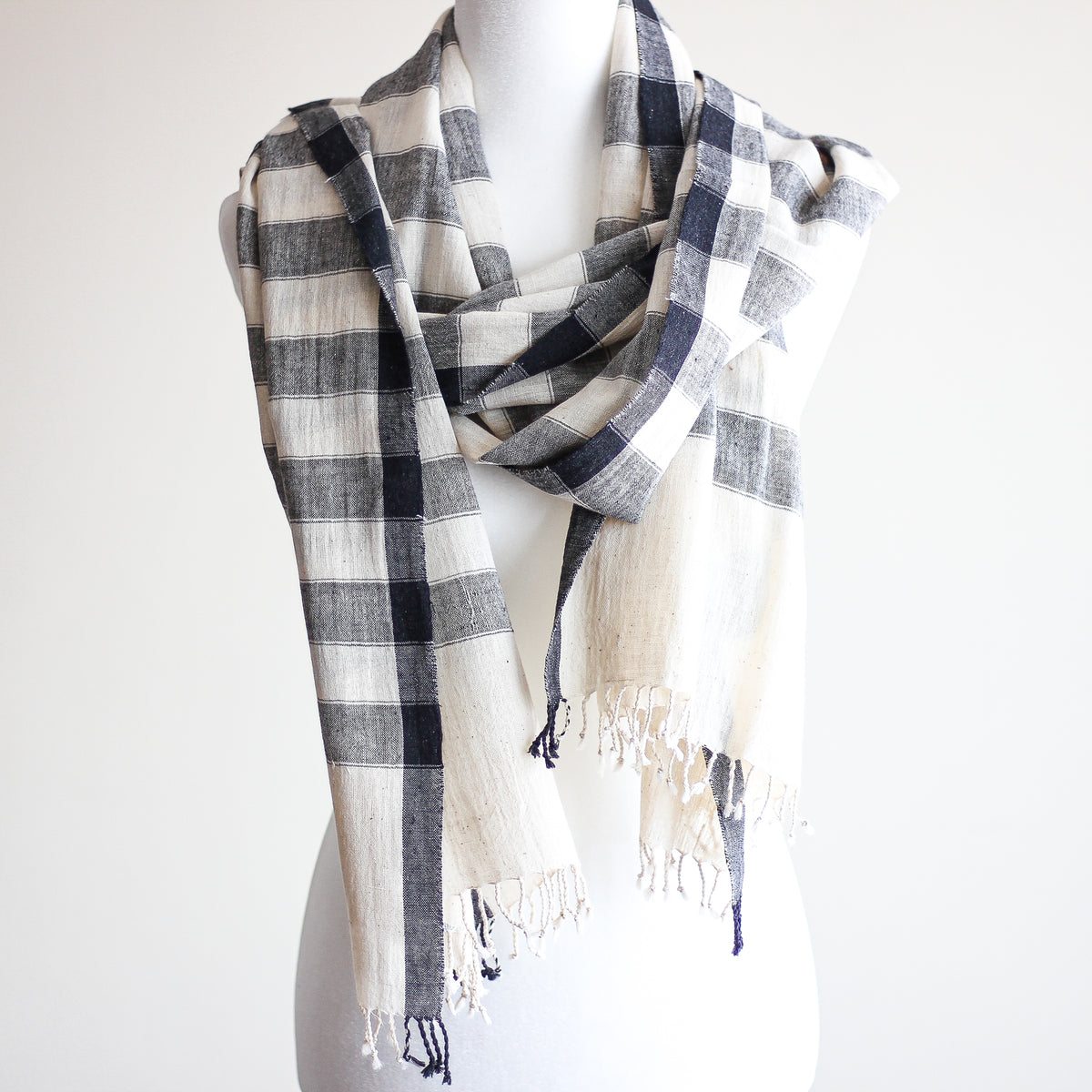
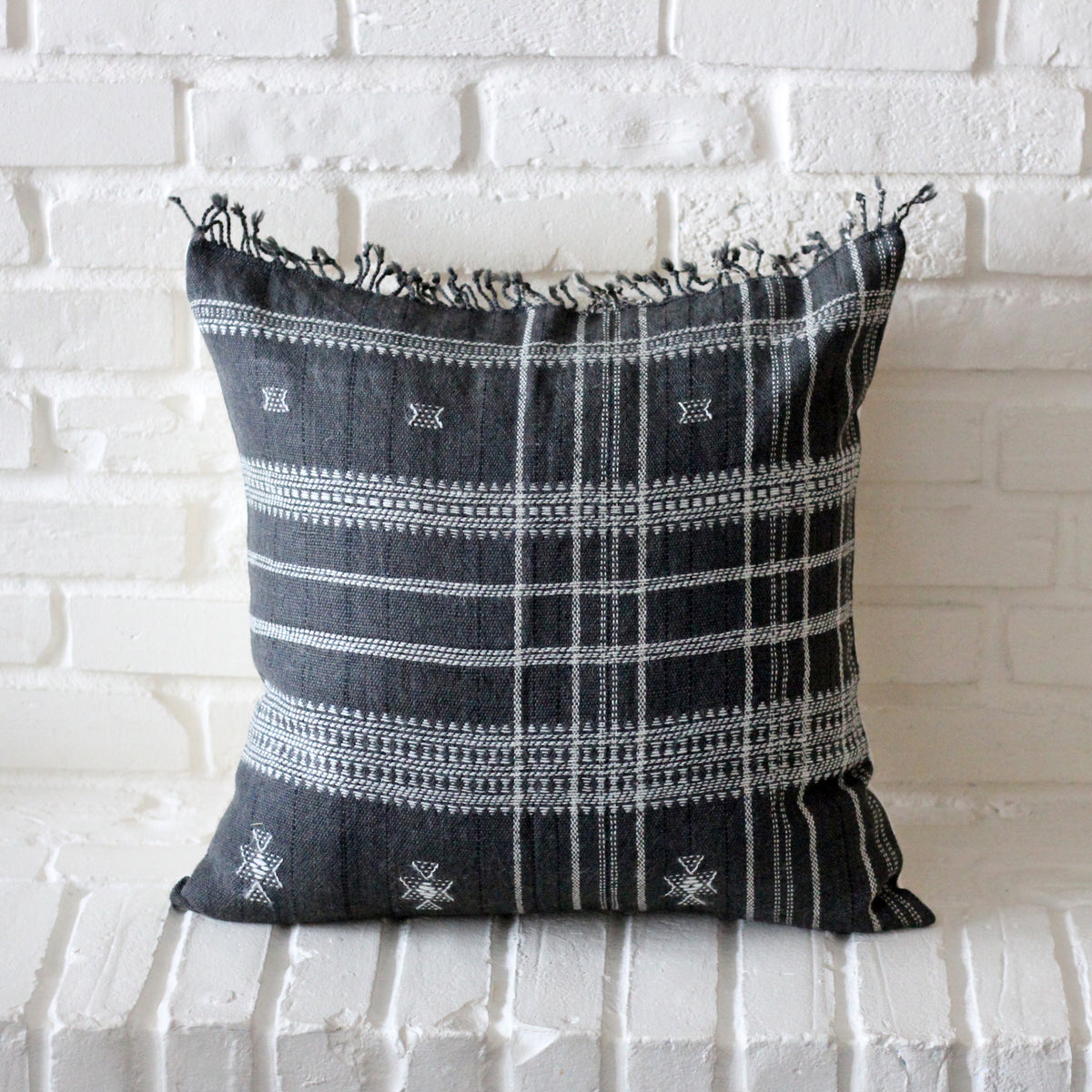



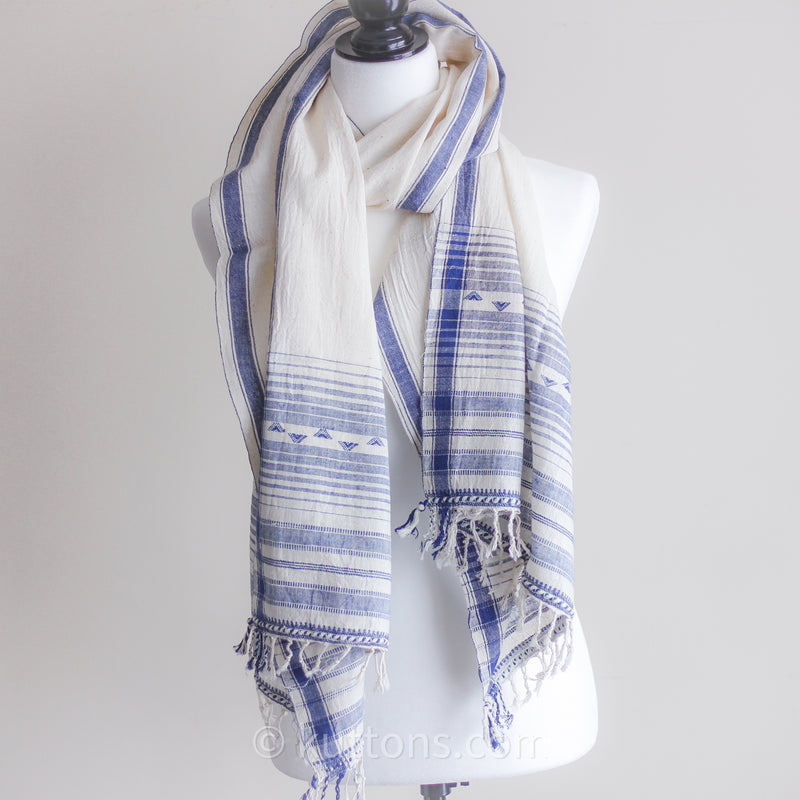
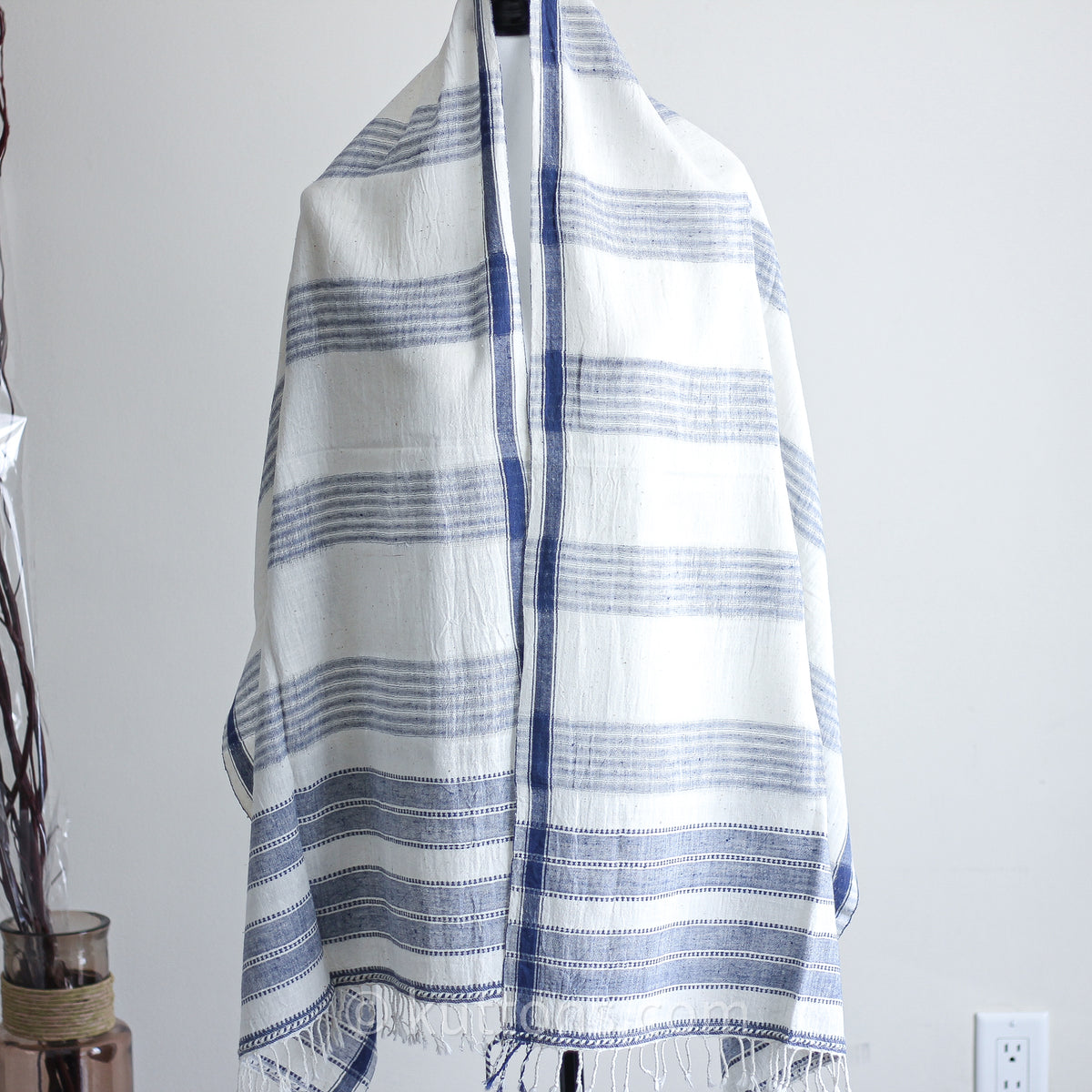
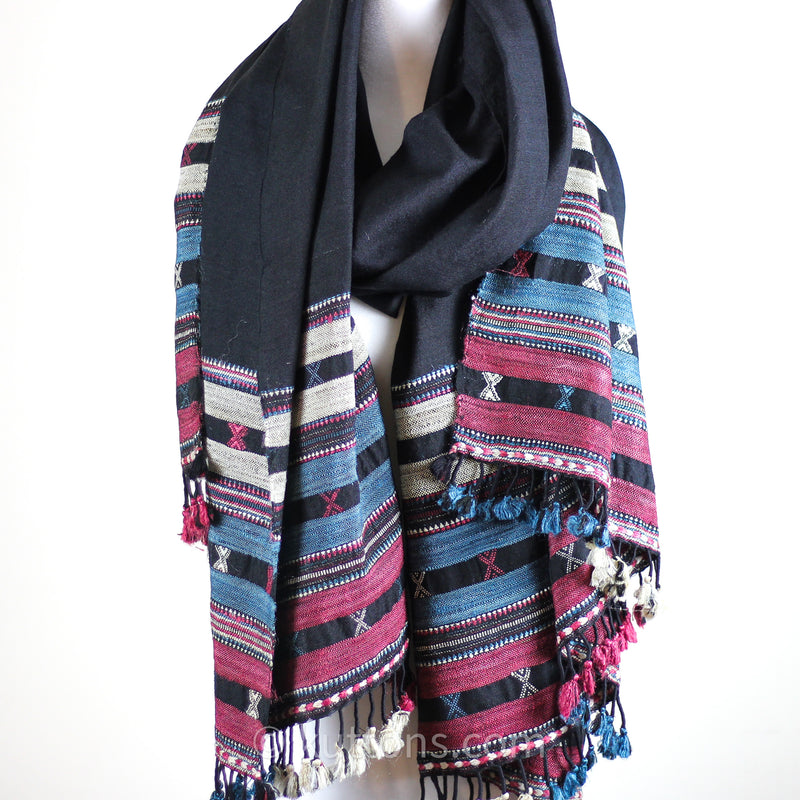
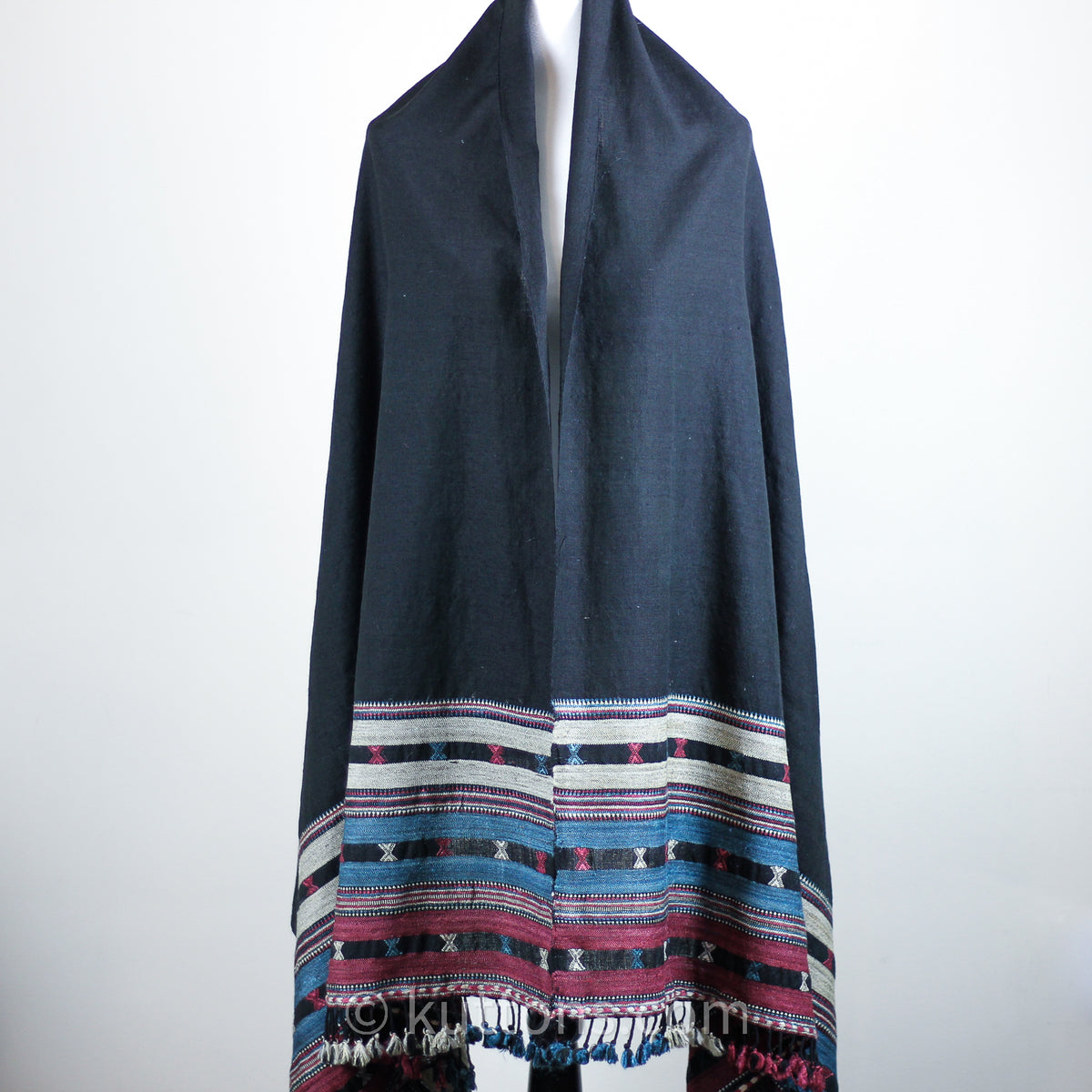
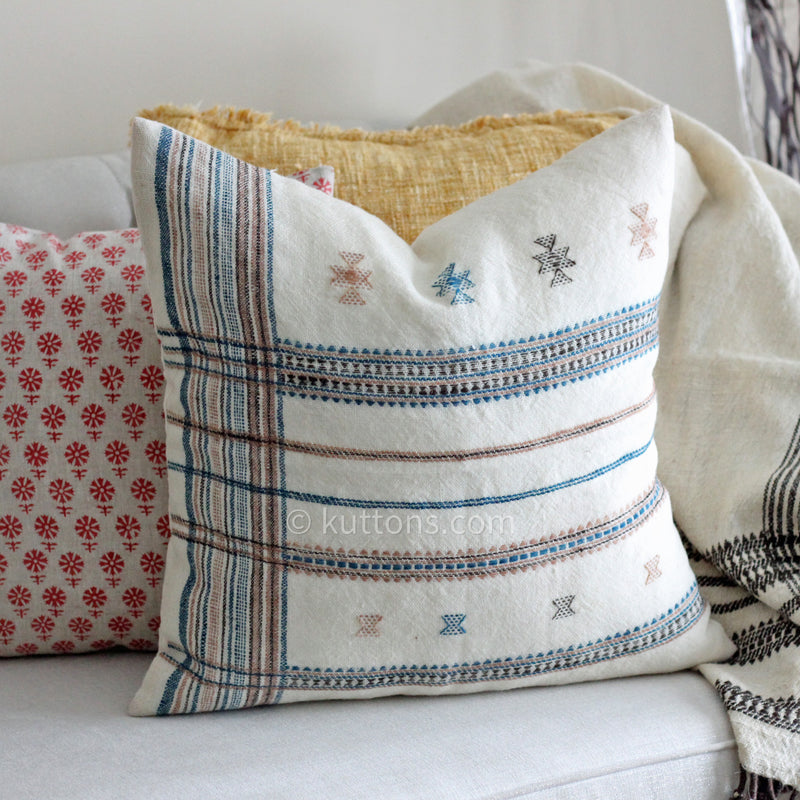
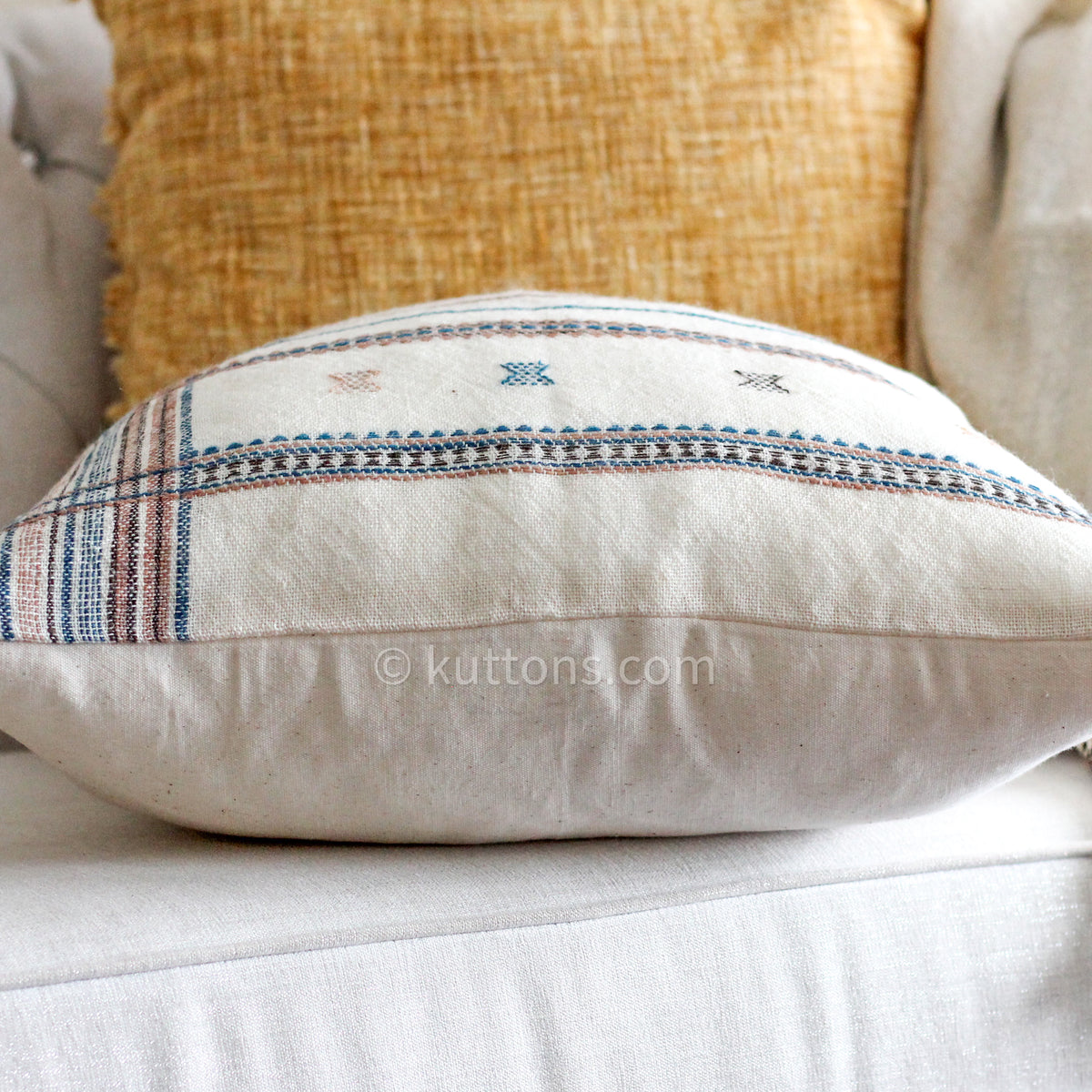
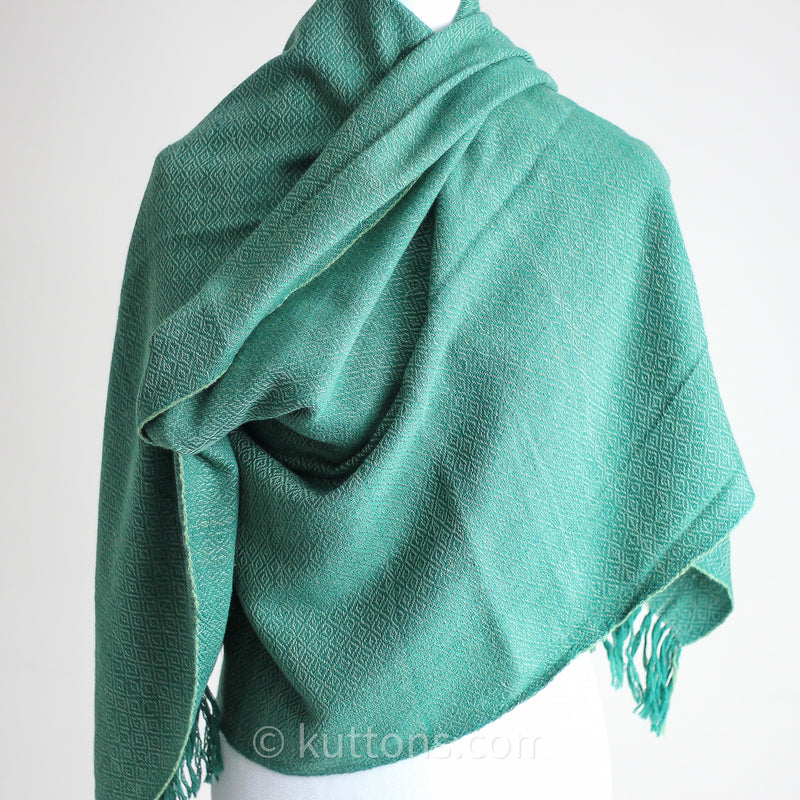
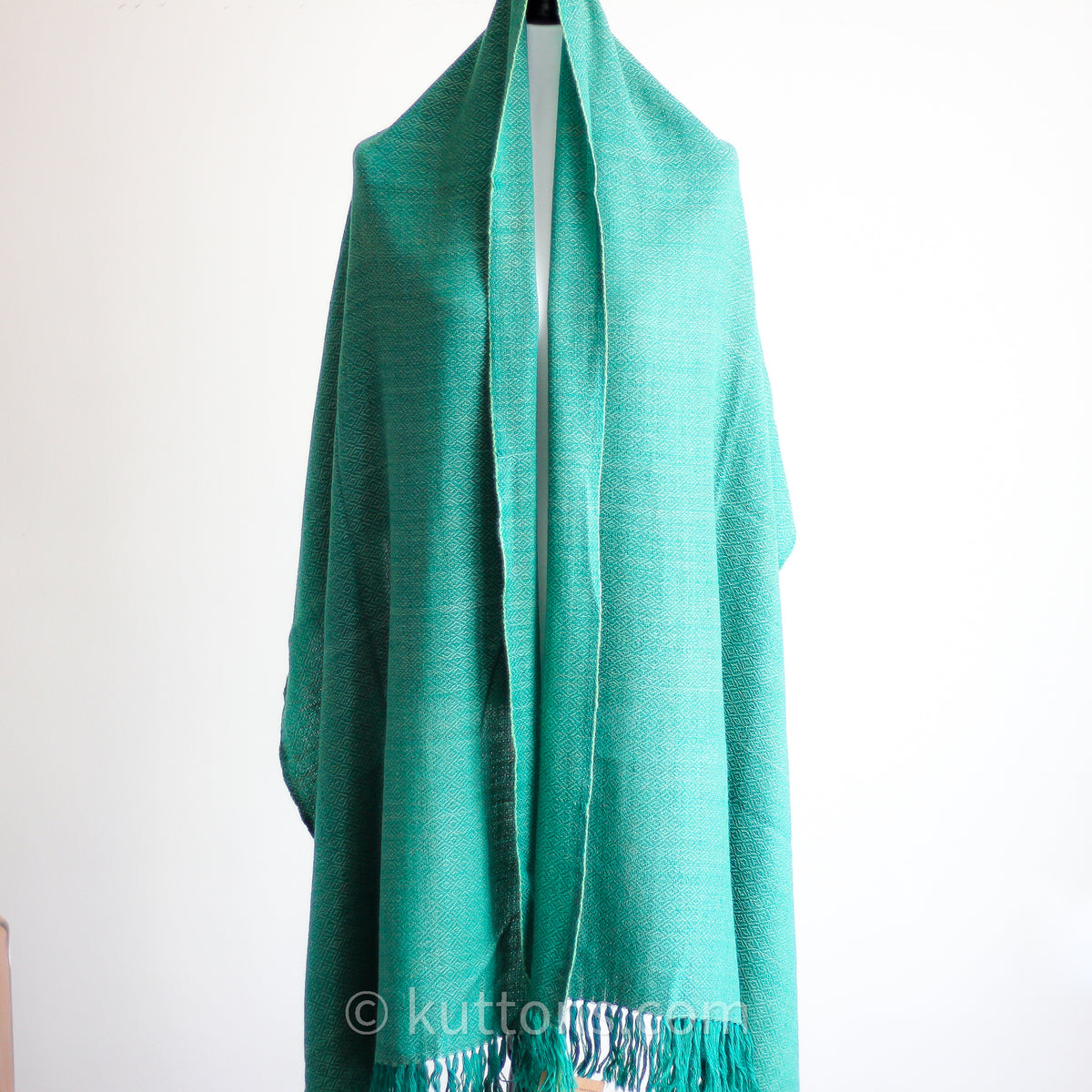
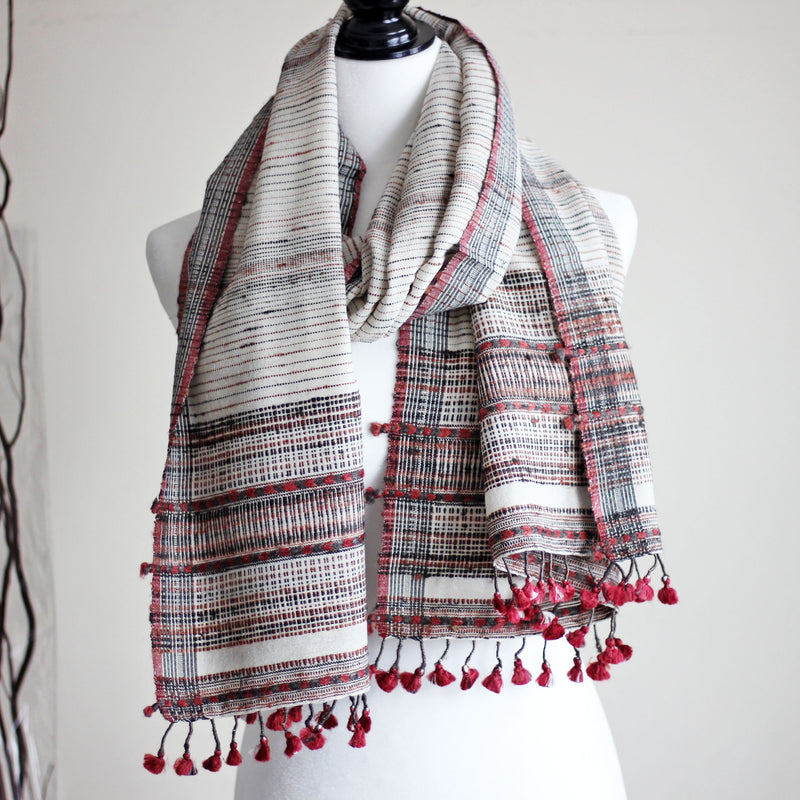
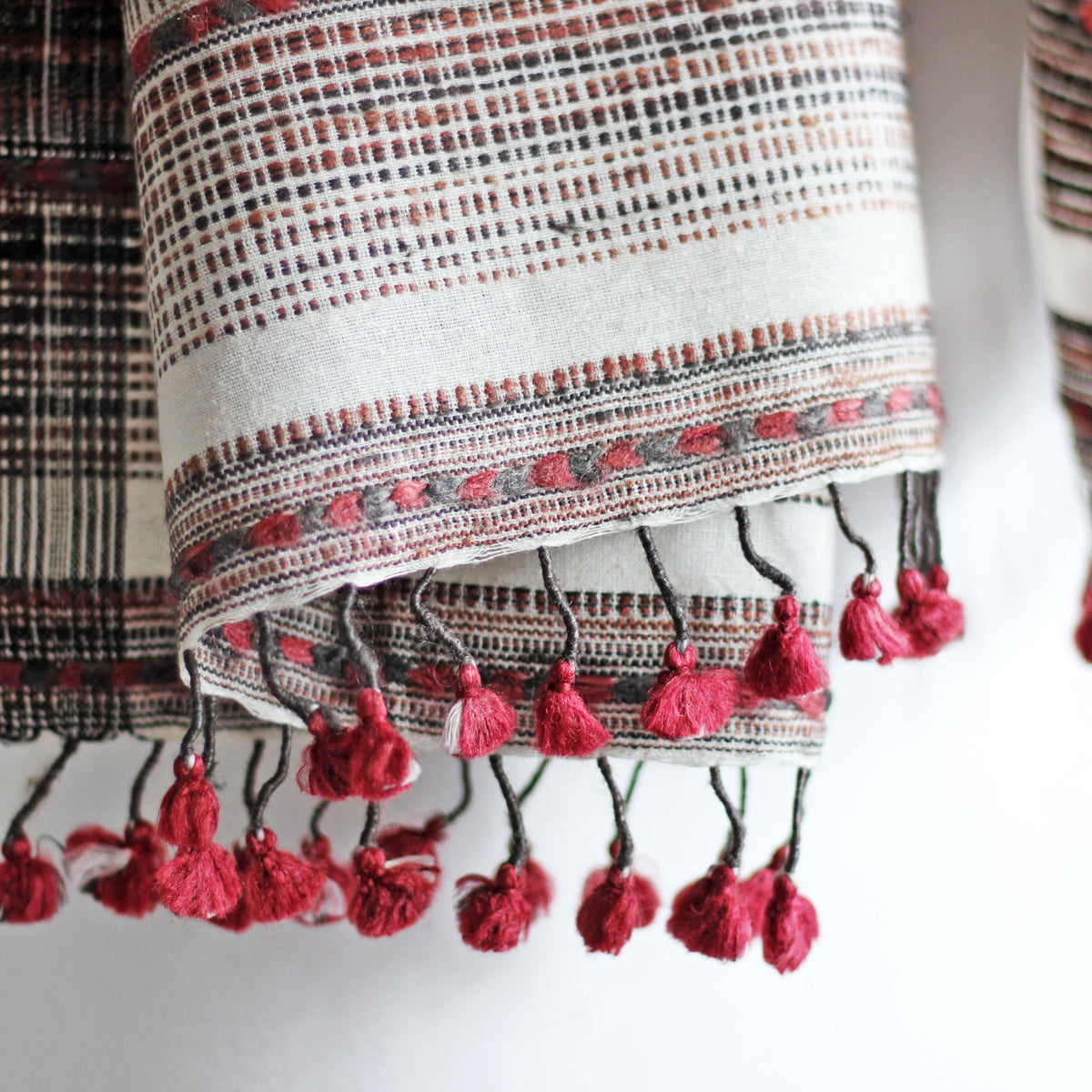
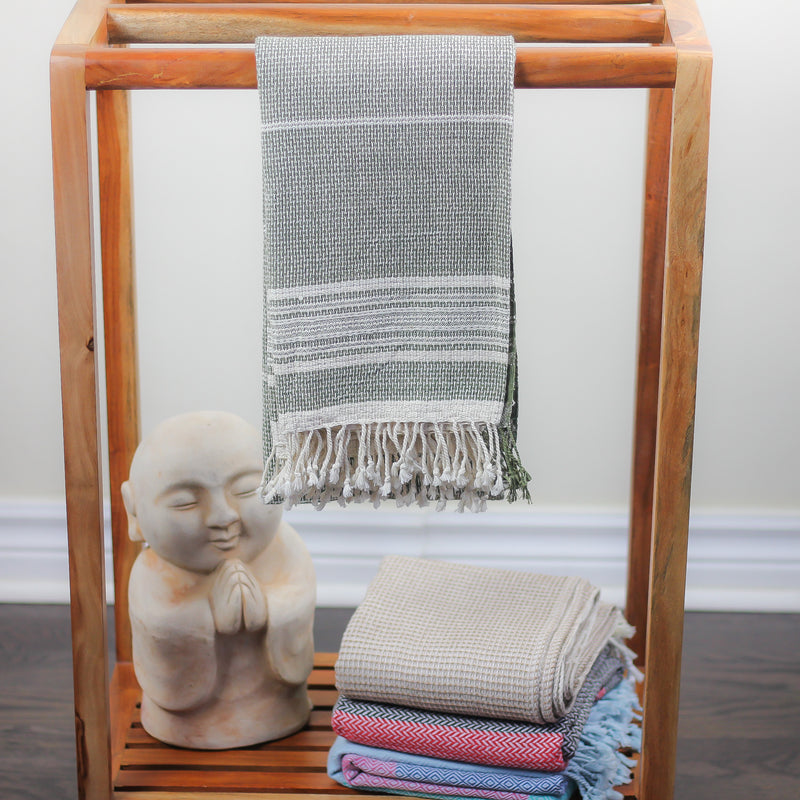
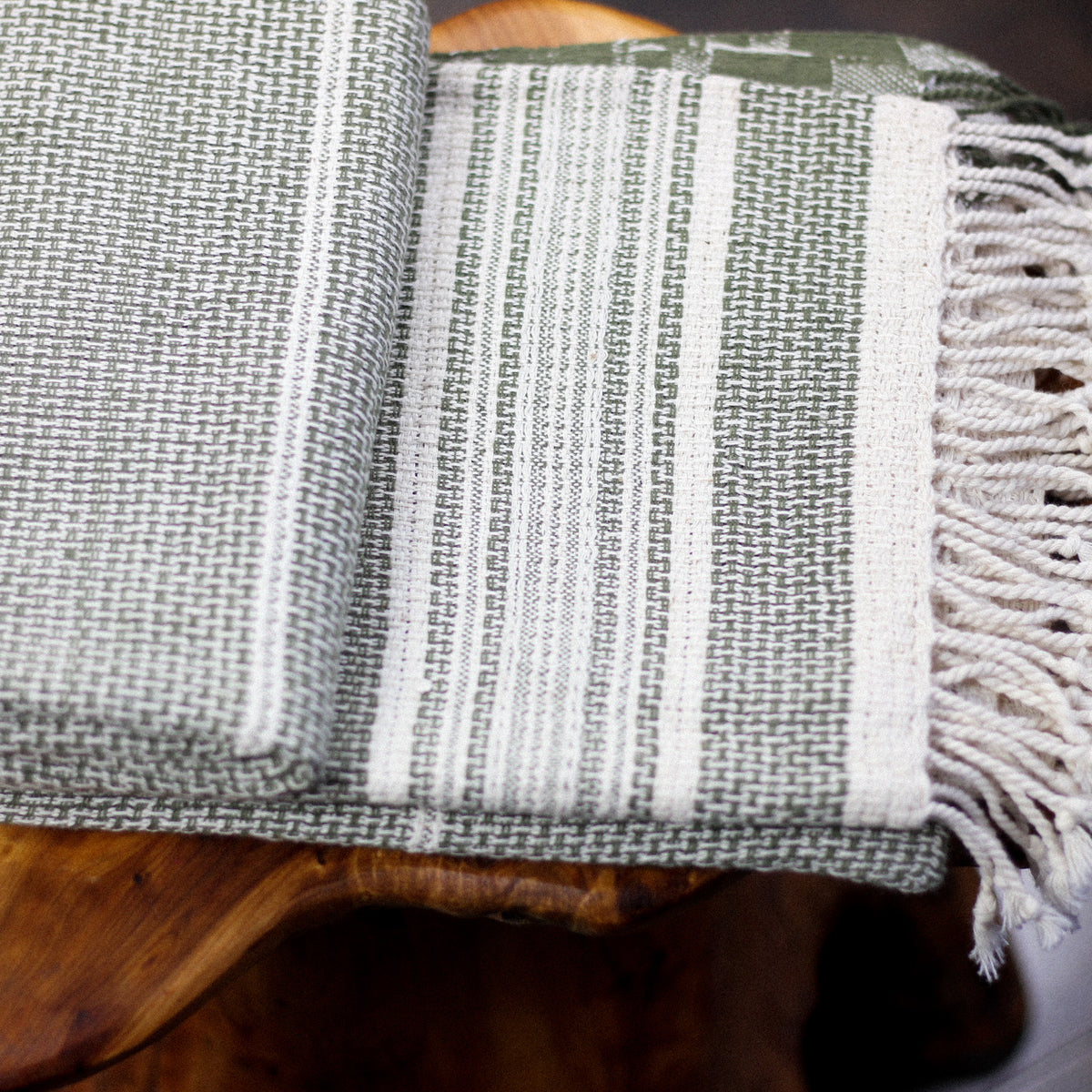
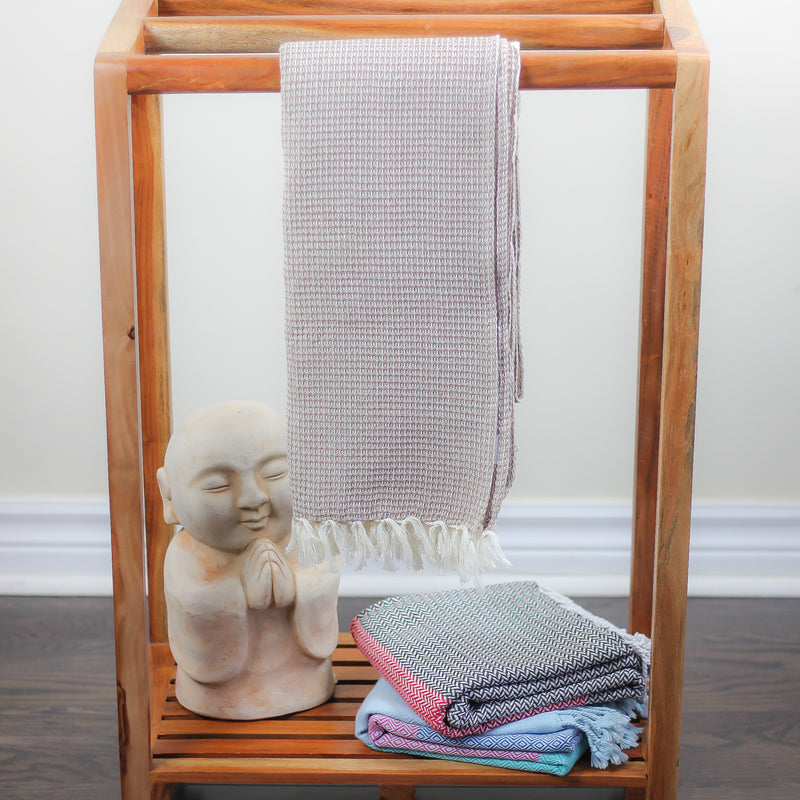
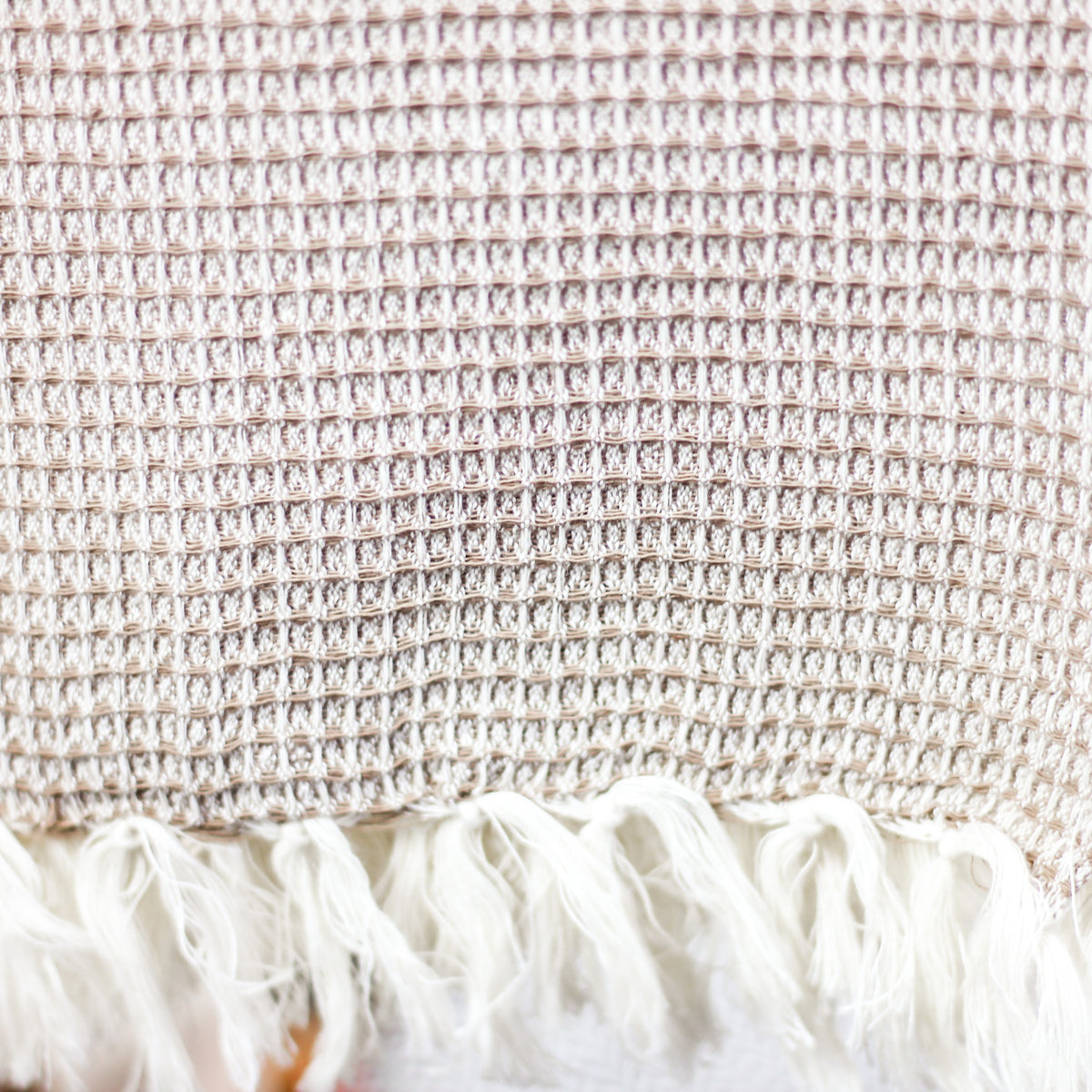
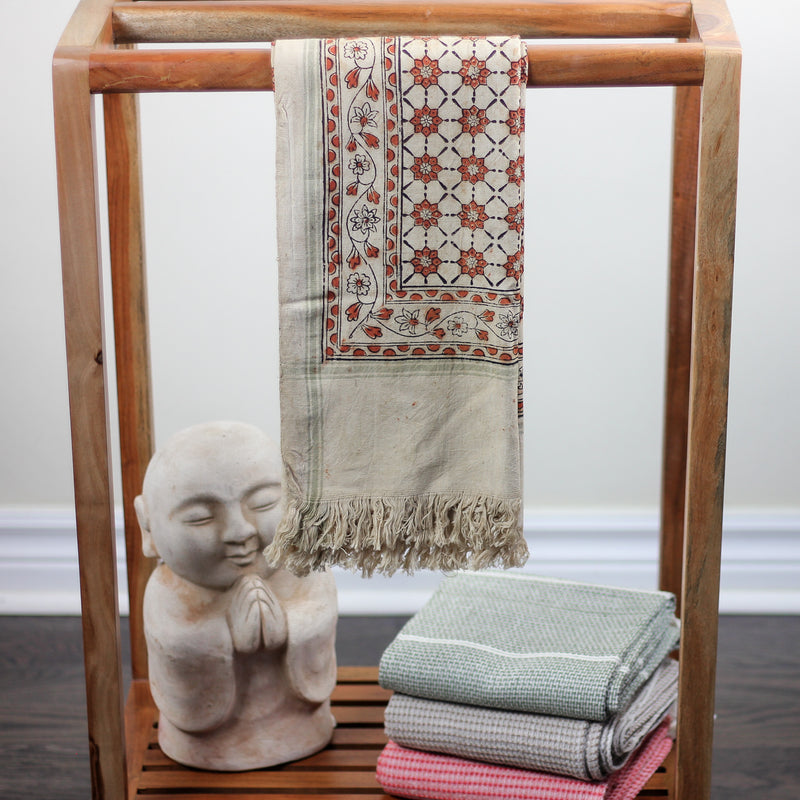
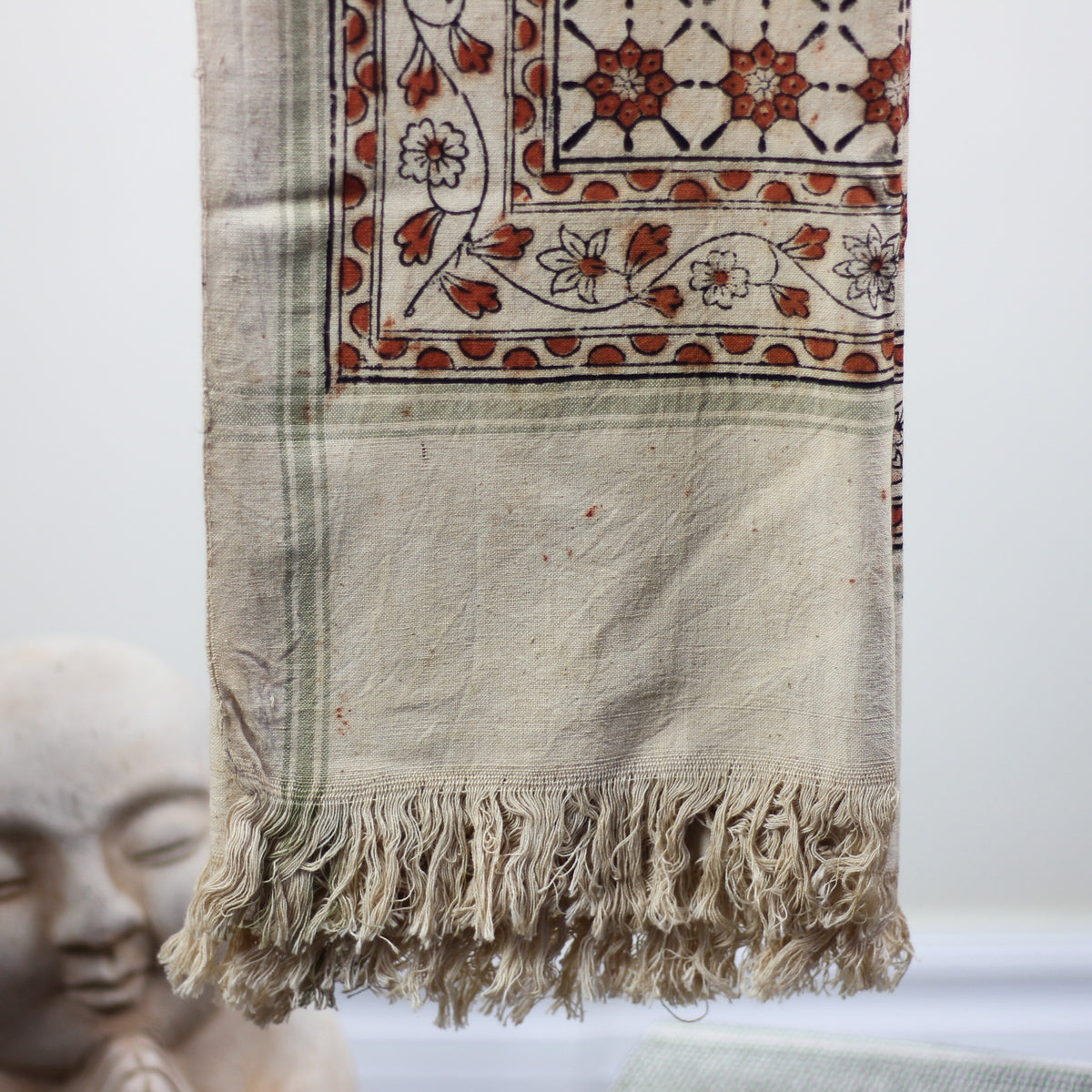
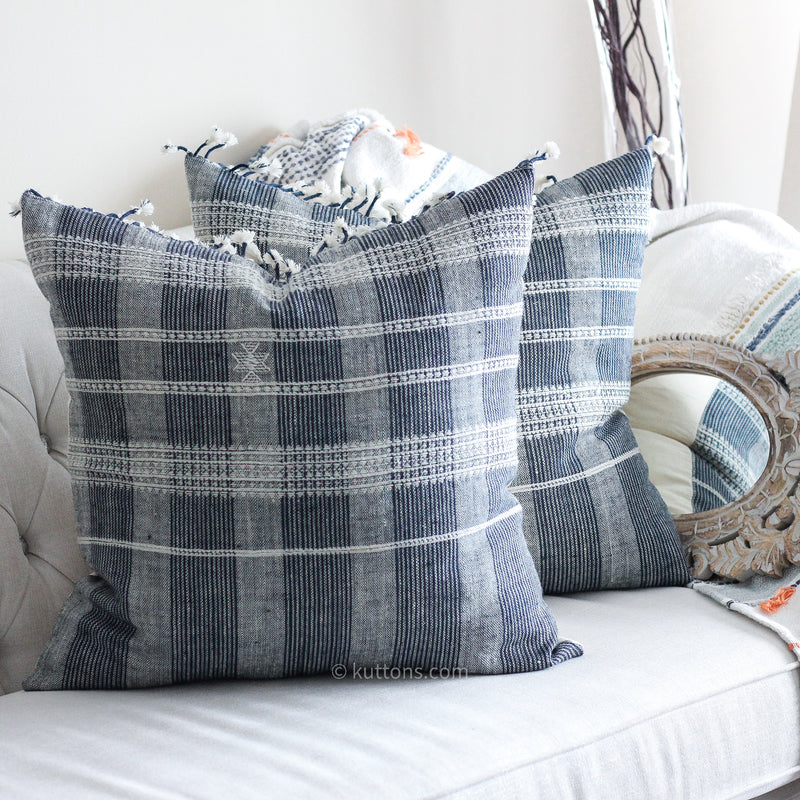
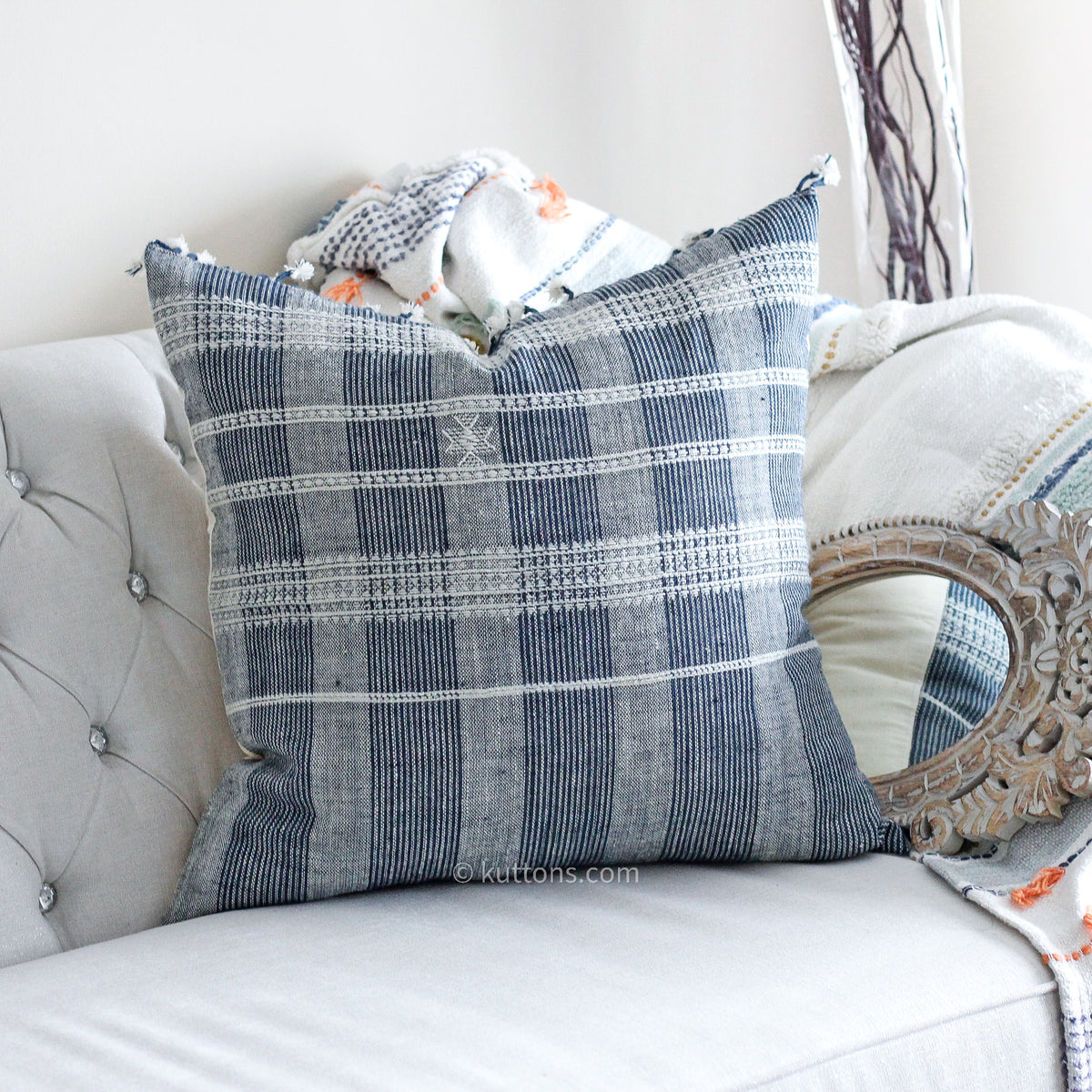
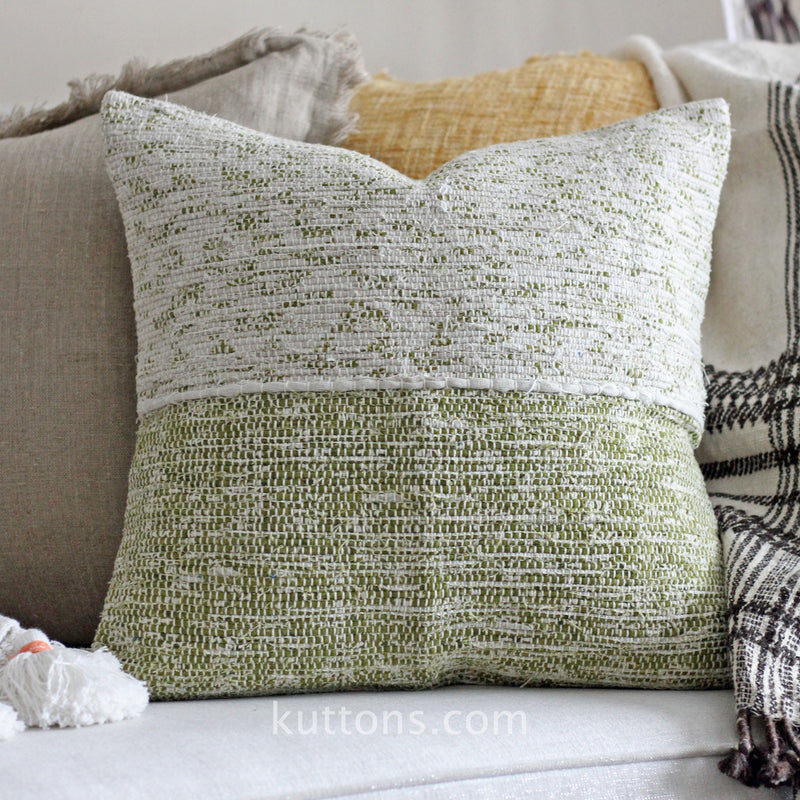
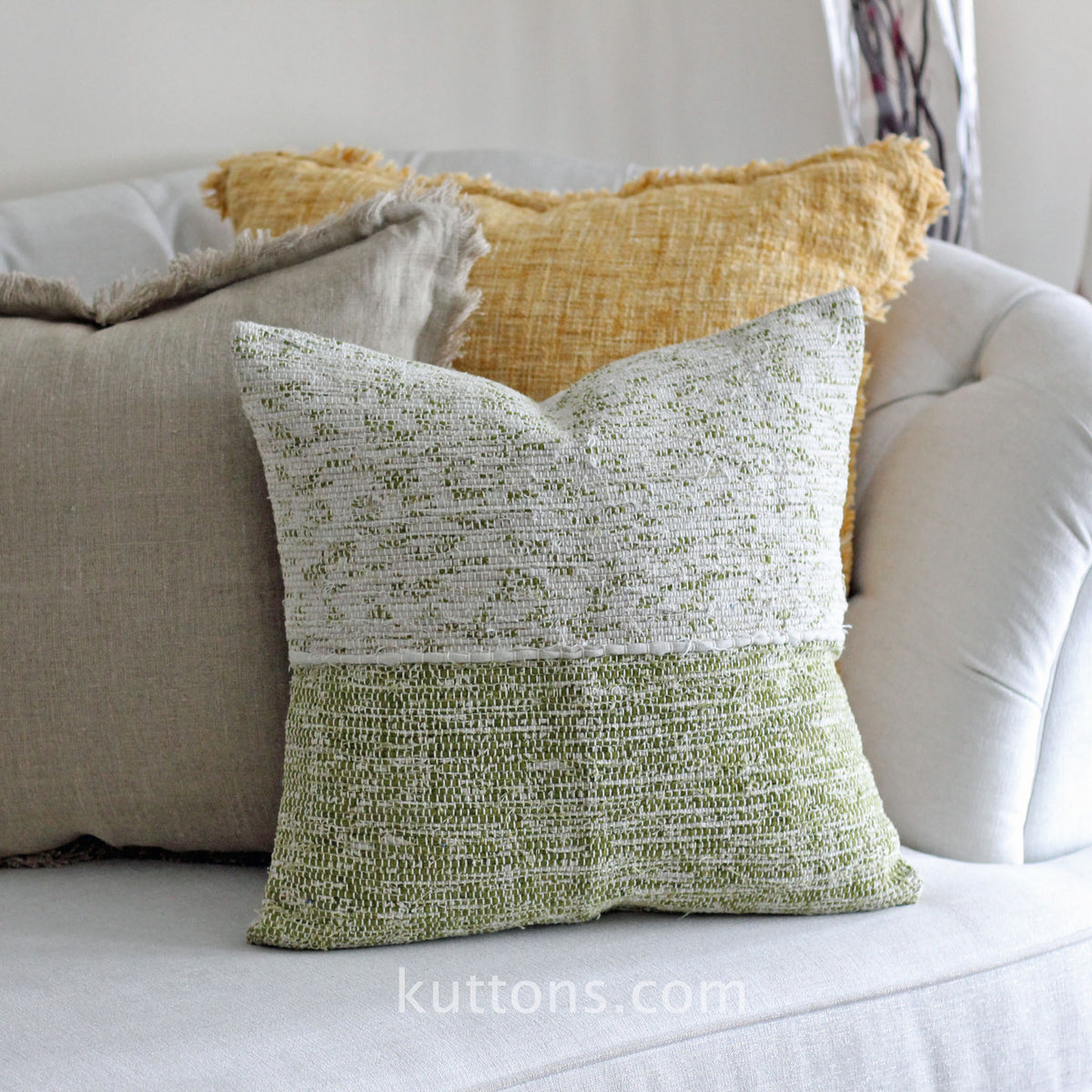
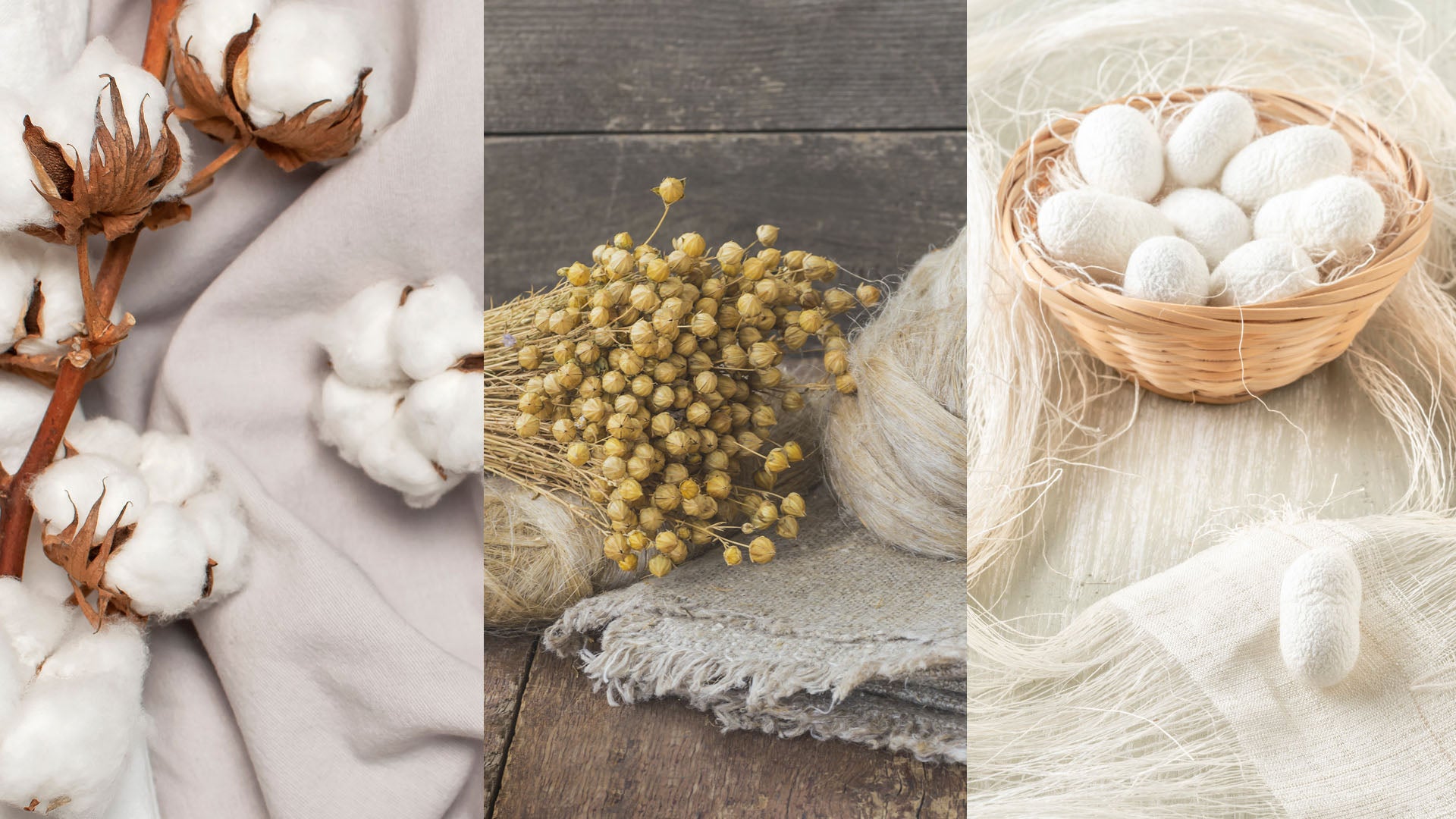
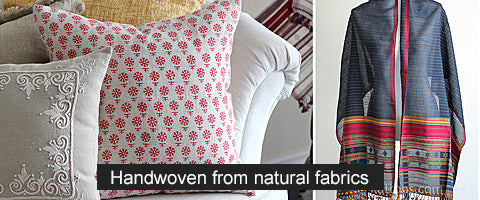
0 comments